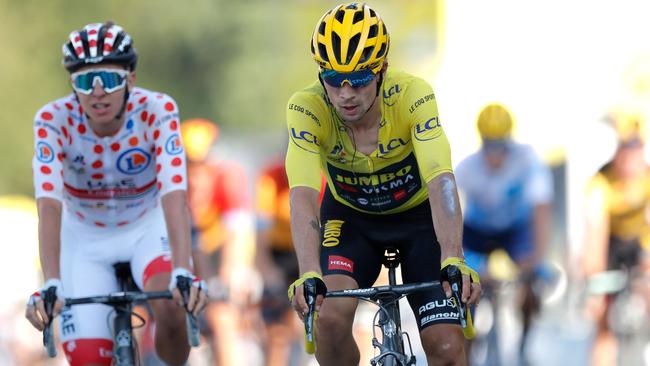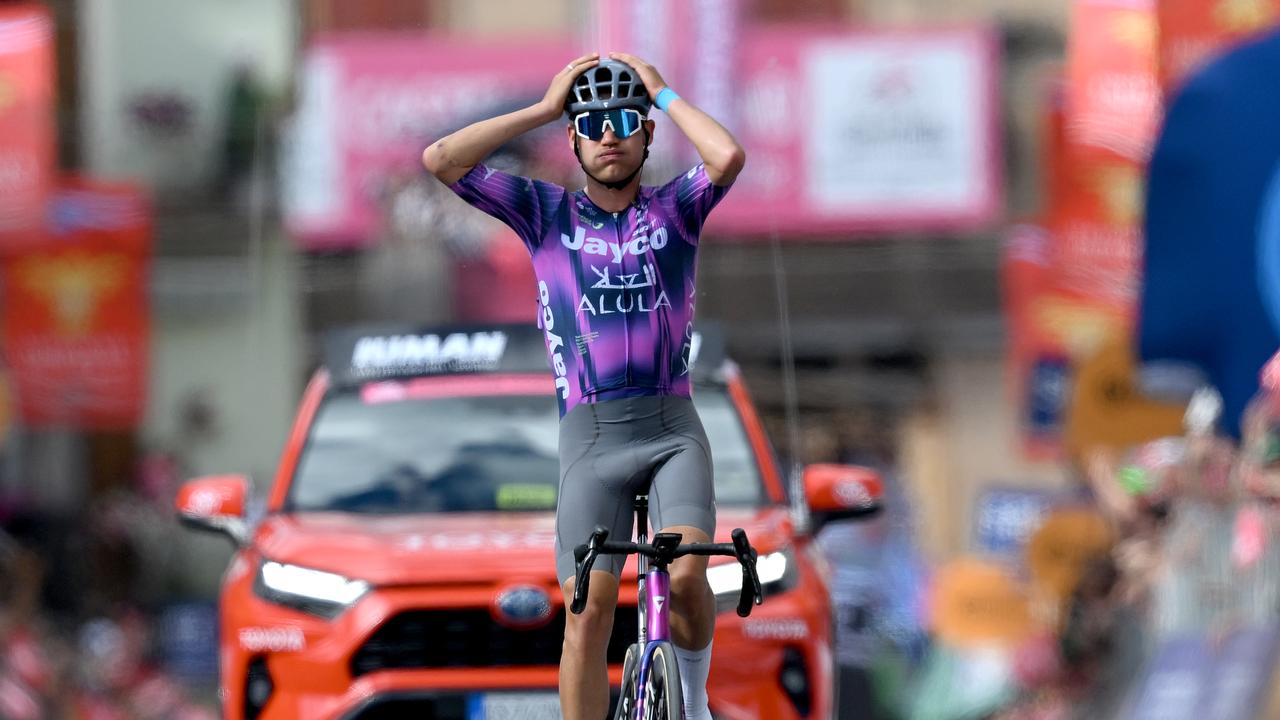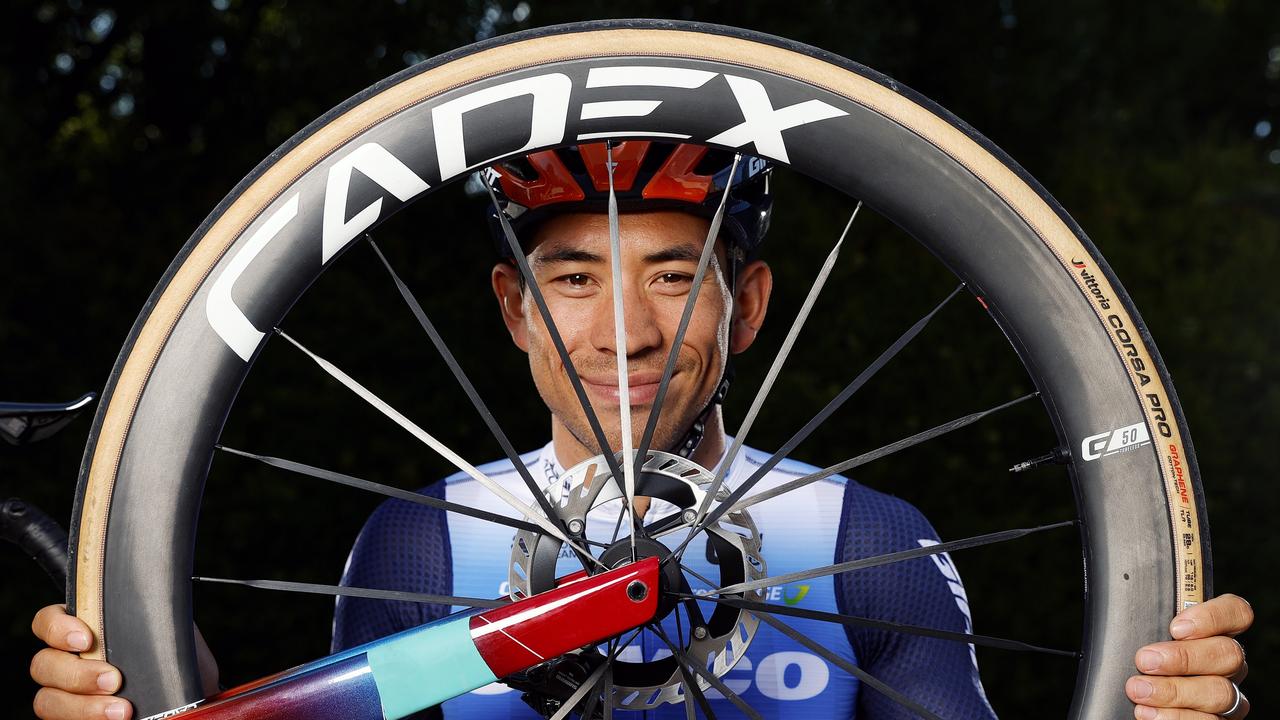How Slovenia became the cycling capital of the world
Primoz Roglic and Tadej Pogacar are grand-tour stars thanks to a smooth system and ideal terrain.

At the headquarters of KD Rog, the small Slovenian cycling team based on the banks of the River Sava to the north of Ljubljana, it can seem as though you are in the middle of nowhere, the quiet roads snaking through farmland, with villages cropping up every now and then.
Yet sitting on the terrace and looking towards the mountains, it can appear as though you are at the centre of the cycling world.
The runner-up in the Tour de France last year, Primoz Roglic, will often ride past on his way to the hills and stop to get his bike washed.
On Wednesday the father of Tadej Pogacar, the winner of the Tour, dropped in to discuss the renaming of the team’s junior set-up, now known as Team Pogi, after his son. The two riders who were engaged in such an epic three-week duel in France live barely a kilometre apart in Ljubljana, the capital, and both started out at this UCI Continental team.
It is a small world, Slovenian cycling, but then this is a small country, of just over two million people. “We are very proud of them,” says the team’s general manager Miro Miskulin. “It’s crazy that we now have two of the best in the world.”
At the start of a new season, the signs are that these two near neighbours will again be at the forefront of cycling. Pogacar, 22, who snatched the yellow jersey from Roglic in that extraordinary time-trial to La Planche des Belles Filles in September, kicked off the 2021 season by winning the seven-day UAE Tour last week, holding off British rider Adam Yates. Roglic, 31, begins his season this weekend as one of the favourites to win the Paris-Nice stage race.
How has such a previously unheralded cycling nation come to such prominence? The answer seems to lie in a culture that prizes an outdoor lifestyle, promoting sport vigorously among schoolchildren, the combination of mountainous terrain and a clement climate that beckons cyclists on to the road, and a growing awareness of the profile and possibilities of professional cycling. There have always been masses of cyclists on the road in Slovenia, but harnessing this passion and turning it into professional success is a fairly recent development.
“Cycling is the right sport for Slovenian people,” Miskulin says. “Our primary schools are very well organised for sport, it is very important and has been since even before, when we were part of Yugoslavia (before 1991). We want children to ski, to run in the hills, to play football, volleyball, handball and basketball.
“In the evening on TV you see one Slovenian guy who won a medal in ski jumping, Luka Doncic, playing in the NBA (for Dallas Mavericks). And we all watch Atletico Madrid because the goalkeeper, Jan Oblak, is from our city. We really are a sporting nation.”
In an interview with The Times last month, Oblak spoke about how, growing up a few kilometres from the KD Rog headquarters, he had benefited from playing handball, basketball and tennis from a young age. The ability to switch sports after a broad athletic upbringing has been seen to spectacular effect in the rise of Roglic, who became the first Slovenian to win a grand tour when he claimed the red jersey in La Vuelta in 2019, a title he successfully defended in November, making up for that bitter disappointment at the Tour.
Roglic was a few weeks short of his 30th birthday when he first won La Vuelta, but if that makes him appear a late developer, it is because he had spent much of his life as a ski jumper, competing at the second tier of international competition.
“I remember so clearly getting the phone call from him in 2012,” Miskulin says. “He said, ‘Hello, I’m Primoz Roglic, I’m a ski jumper, but I want to become a cyclist.’ I said, ‘OK, come for a coffee, let’s talk.’ ”
The athletic capabilities Roglic possessed were quickly in evidence, but his racing skills needed nurturing.
“Our coach said he was really good on the hills, like Jan Polanc (now riding with Pogacar for UAE Team Emirates). But going downhill, or in the middle of the group, he had big problems. He had no experience on the bike.”
Roglic proved to be a quick learner and, as KD Rog had only an under-23 team at the time, he moved to Adria Mobil, Slovenia’s other Continental team. In 2015, his third season, he won the four-day Tour of Slovenia and was snapped up by the Lotto-Jumbo team, now Jumbo-Visma, for whom he still rides.
Which brings us to Pogacar, who won the Tour at his first attempt last year, a day before he turned 22. Unlike Roglic, this was a rider whose potential became known in Slovenia at the age of nine.
“I was the junior coach at the time, we were training on the biggest hills and I saw a young boy there a lot,” Miskulin says. “I asked another coach: ‘Who is this kid?’ He smiled and said, ‘This is Pogacar. He trains on the hills all the time.’ ”
Pogacar soon joined the junior team at KD Rog. “We did not know how good (he was) until he started riding the long stage races and every day we saw him getting better and better,” Miskulin says. “But it is important for us not to push and that is the same philosophy of our city.”
Still, if you produce the top two riders in the Tour, your system is clearly working well. Andrej Hauptman, who had been Slovenia’s most successful cyclist, winning a bronze medal at the UCI Road World Championships in 2001, is now Pogacar’s coach and guided him to victory in the UAE Tour. The world of Slovenian cycling may be small, but in many ways it is perfectly formed.
The Times



To join the conversation, please log in. Don't have an account? Register
Join the conversation, you are commenting as Logout